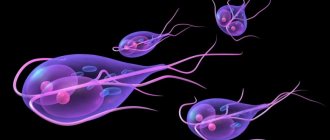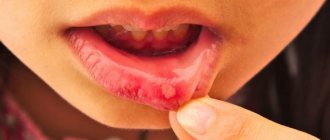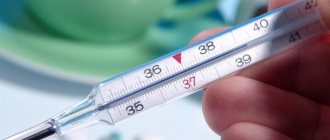With a disorder of calcium-phosphorus metabolism, which accompanies moderate or severe rickets, 4% of children develop spasmophilia, which is also called infantile tetany. This pathology is accompanied by a spastic state of the muscles of the limbs, face, larynx, as well as the occurrence of general clonic and tonic convulsions. It is usually detected between the ages of three months and two years. One of the most striking manifestations of the developing disease are the symptoms of Chvostek, Trousseau and Lyust, which help to determine the severity of the ongoing disease. We will talk about how these symptoms are determined and how they are treated later in the article.
How are spasmophilic symptoms checked?
To check for the presence of Chvostek's sign, also called the facial nerve phenomenon, the child is placed on a bed without a pillow. The legs should be straightened and the arms should lie along the body.
The symptom is checked by lightly tapping with a percussion hammer or fingers at the exit site of the trigeminal nerve (above the zygomatic arch). If the patient experiences involuntary twitching of the eyelid and corner of the upper lip, then the mentioned symptom is considered positive. By the way, it is checked on both cheekbones.
Chvostek's symptoms have 3 degrees of manifestation:
- Muscle contraction throughout the area of innervation of the facial nerve.
- Contraction of the muscles in the corner of the mouth and at the wing of the nose.
- Muscle contraction only in the corner of the mouth.
In the presence of obvious tetany, the child exhibits the first degree of symptom even from a light touch in the area of the facial nerve.
Diagnostics: instrumental methods and syndromes
Diagnosing manifest spasmophilia is not a complicated process; clinical and radiological signs of rachitic symptoms and confirmation of cases of convulsions and spasms are taken into account.
In case of latency, it is necessary to carry out mechanical or galvanic skin tests to determine the level of nervous and muscle activity, while identifying the presence of symptoms:
- Chvosteka
- when you tap with a finger or a hammer at the exit of the branches of the facial nerve - the cheekbones, a twitching occurs in the corner of the eye or mouth; - Trousseau's syndrome
- when the neurovascular bundle of the shoulder is compressed, the muscles of the arm involuntarily contract, bringing it into the “obstetrician’s hand” position; - Lyust's symptom
- tapping in the area of the head of the fibula, where the peroneal nerve exits, causes flexion of the foot with its abduction to the side; - Erba
- the impact of an electrical discharge on the median nerve of the elbow leads to compression of the fingers of the palm; - Maslov's phenomenon
is a reaction to a painful process, for example, an injection does not cause a long-term cessation of breathing; this does not happen to healthy children, since their breathing quickens at the moment of the injection.
Additional ways to check for antispasmodic symptoms
No less indicative in terms of determining the severity of the baby’s condition are the symptoms of Trousseau and Lust.
- Trousseau's sign is detected by compression of the middle of the child's shoulder. In this case, the doctor should try to capture as much of the soft tissue of his hand as possible. If, as a result of this (about 2-3 minutes after compression), the patient’s fingers take a forced position, called “obstetrician’s hands” (that is, the thumb is brought to the palm, the index and middle fingers are extended, and the ring and little fingers are bent), then the symptom is considered positive. To check for its presence in older children or adults, you can use a blood pressure cuff, pumping air into it until the pulse stops.
- The Lust sign is checked by using a hammer, which is tapped behind the head of the fibula, or by squeezing the gastrocnemius muscle in the area of the Achilles tendon. If the patient experiences involuntary abduction of the foot (“ballerina’s foot”), then the symptom can be considered positive. It is tested on both limbs.
The symptoms of Chvostek, Trousseau, and Lyust are considered spasmophilic. They become positive if a sick child has a change in the amount of calcium in the blood that is responsible for muscle contractions. This can be caused not only by the presence of rickets, but also by other diseases.
Clinical picture
Symptoms of spasmophilia will depend on the stage, form, course and type of disease.
Latent form
The latent form of the disease lasts from several weeks to several months; often these infants have all the symptoms of rickets:
- excessive sweating;
- tachycardia;
- anxiety at night;
- emotional lability;
- fear;
- malfunction of the gastrointestinal tract.
Manifest form
Eclamptic convulsions - begin with muscle twitching of the face, neck, limbs, and gradually take over the entire body. During the attack:
- unconscious infant;
- the face turns red;
- tachycardia, respiratory failure, general cyanosis occurs;
- uncontrolled urination and defecation;
- foaming from the mouth;
- due to increased intracranial pressure, the large fontanel is tense.
This situation lasts from several minutes to several hours.
Eclampsia is dangerous by stopping breathing or cardiac function.
Infantile tetany
Tetany is expressed in carpopedal spasm, lasting from 3–4 hours to several days, with:
- the child is overcome by severe pain;
- due to a long period of spasm, the limbs may swell;
- There is a bending of the arms to the maximum limits at the elbows and wrists, a shifting of the shoulders towards the body, and flexion of the hands.
Development of laryngospasm
Laryngospasm or spasm of the glottis is a clear symptom of spasmophilia. It can develop during the process of crying or without obvious reasons; it happens up to several times a day. With moderate spasm, the child turns pale, a characteristic whistling breath appears, and when the gap is completely blocked, the following occurs:
- cold sweat;
- cyanosis;
- momentary unconsciousness;
- apnea;
- loud exhalation followed by noisy breathing;
- going to bed occurs.
The danger lies in possible death.
There are also local isolated spasms in the area:
- eye muscles – emerging strabismus;
- masticatory muscles – trismus, neck rigidity;
- smooth muscles - uncontrolled bowel movements and urination.
The obvious form of the disease overcomes the baby from a couple of days to 2 - 3 weeks.
What is tetany
Chvostek's and Trousseau's symptoms are signs of spasmophilia (tetany). This disease is characterized by increased nervous excitability, manifested by muscle spasms of the limbs or larynx. Most often, this pathology is observed in boys in the first six months of life.
And the biological basis of this disease is the low level of ionized calcium in the child’s blood.
Why is Chvostek's sign dangerous in children?
Photos of children with tetany allow us to understand what the signs of the disease are. The main one is laryngospasm, which is expressed by difficulty breathing, pale face, sweating, and sometimes loss of consciousness. Periodic cramps of the feet and hands (carpopedal spasm), sometimes lasting several hours, are also characteristic. Spasms of other muscle groups are also possible - respiratory, chewing, eye, etc.
But the most severe sign of the disease is considered to be an attack of eclampsia - clonic-tonic convulsions, starting with twitching of the facial muscles and turning into cramps of the limbs and laryngospasm. In this case, the child most often loses consciousness, foam appears on the lips, and involuntary urination is observed. Eclampsia is dangerous due to the possibility of respiratory or cardiac arrest.
General description of the disease
The onset of the disease occurs at the same age as rickets, since these two diseases are etiologically and pathologically interrelated. The calciopenic state of tetany is accompanied by spasticity of the muscles of the face, larynx, and limbs.
In the modern world, 3.5–4% of children with obvious signs of rickets are susceptible to infantile tetany. Such a small percentage suggests that the number of severe cases of rickets has decreased.
In the case of an obvious form of spasmophilia, medical staff and parents must be fully prepared to assist the child in restoring vital functions.
The thetanoid state over a long period of time leads to disruption of the central nervous system, delayed mental development, and occasionally to death.
Who might get tetany?
In the first days of life, convulsive conditions and hypocalcemia most often occur in babies born prematurely, in twins, as well as in those who have had jaundice or an infectious disease.
Chvostek's symptom in children in the first months of life can be provoked by both a decrease in the intake of calcium into the child's body and an increase in the secretion of calcitonin. Doctors associate this condition with a disruption in the supply of phosphorus and calcium when the baby is abruptly switched to feeding with cow's milk, as well as (in rare cases) with a lack of vitamin D and calcium in the mother's body.
As a rule, in children, hypocalcemia is manifested by neuromuscular irritability, convulsions, vomiting, tachycardia and respiratory symptoms.
Treatment of tetany
Attacks of eclampsia require urgent assistance to the child, and in case of respiratory or cardiac arrest, resuscitation measures.
For any manifestations of tetany, the child is prescribed anticonvulsants (“Sibazon” intramuscularly or intravenously, “Sodium oxybarbutyrate” intramuscularly, “Phenobarbital” rectally in suppositories or orally, etc.). Intravenous administration of 10% calcium gluconate solution or intramuscular 25% magnesium sulfate solution is also indicated.
Spasmophilia, which causes Chvostek's and Trousseau's symptoms, usually has a favorable prognosis in most cases. The only danger is prolonged laryngospasm, which threatens respiratory arrest.
When the child reaches the age of 2-3 years, the pathological condition is eliminated as a result of stabilization of calcium and phosphorus levels in the blood.
What triggers the development of the disorder?
Due to a failure of calcium-phosphorus metabolism, a drop in the saturation of total and ionized calcium in the blood occurs, combined with alkalosis and hyperphosphatemia.
An increase in the amount of inorganic phosphorus is preceded by:
- feeding the baby with cow's milk, when excess phosphorus is partially excreted;
- overdose when taking vitamin D2 and D3 due to self-medication or due to uncontrolled prescription by a pediatrician;
- absorption of a large percentage of exposed skin from ultraviolet rays in the spring.
As a result of high levels of vitamin D metabolite:
- the quality of work of the parathyroid glands decreases;
- there is a change in the alkaline reserve of the blood, in advanced cases alkalosis occurs;
- the absorption of calcium and phosphorus in the intestine is stimulated or microelements are excreted in the urine in increased quantities, reabsorption of amino acids begins in the renal tubules;
- The baby’s bone tissue accumulates calcium above the limit, which is why its level in the blood decreases, and the amount of potassium increases, which leads to hyperkalemia.
Also, the causes of ultra-high muscular-nervous activity and convulsive readiness can be a decrease in the blood level of:
- magnesium;
- sodium;
- chlorides;
- vitamins B1 and B6.
In this case, any unfavorable factor - fear, screaming, crying, a viral disease, vomiting, a jump in temperature can provoke a convulsive attack.
Children who feed on mother's milk almost never suffer from spasmophilia; the risk group is artificial babies and premature babies.
Hypoparathyroidism is a disease that is accompanied by Chvostek's sign.
Chvostek's sign is also a clear sign of a pathological condition called hypoparathyroidism, in which there is a decrease in the function of the parathyroid glands. Most often, this problem occurs as a result of surgery for thyroid disease or when there is an inflammatory process in it. And sometimes dysfunction can be caused by infectious processes, such as measles or influenza.
In newborns, hypoparathyroidism develops in the case of a congenital absence of the parathyroid glands or when their functioning is suppressed by increased release of parathyroid hormone in the mother's body during pregnancy.
In this case, the patient, as a rule, exhibits a decrease in the calcium content in the blood in parallel with an increase in the concentration of phosphorus. And outwardly this is manifested by the already described tetany, intestinal phenomena, abnormalities in the growth of teeth, nails and hair, as well as skin changes.
In such cases, the symptoms of Chvostek and Trousseau, along with laboratory tests, help to accurately identify the developed tetanic condition and diagnose the patient.
Treatment of hypoparathyroidism
To treat this disease, it is important to take into account the reasons that caused its appearance, as well as the severity of the symptoms. In the acute course of the disease with symptoms of tetany, urgent administration of 10% calcium chloride or calcium gluconate intravenously is recommended. This is done slowly, taking into account the fact that the first mentioned solution contains 27% of the substance of the same name, and the second contains only 9%.
As a rule, in order to eliminate Chvostek's symptoms, treatment with calcium supplements is required for at least 10 days. Taking calcium orally has a good effect, and doctors advise doing this by dissolving the drug in milk to prevent the development of gastritis.
The chronic condition of hypoparathyroidism requires taking vitamin D, starting with a loading dose (200-300 thousand units per day), with mandatory monitoring of phosphorus and calcium levels in the blood, and after normalizing their levels, the dose is reduced to 50 thousand units. per day in children under one year old or up to 125 thousand units. – in patients after a year.
What other diseases cause Trousseau and Chvostek symptoms?
In addition to diseases caused only by a decrease in calcium in the blood plasma for any reason, the symptoms of Chvostek, Trousseau and Lust can also be found in other ailments. These include:
- Neurasthenia with an anxious and suspicious state, manifested in the form of hyperventilation syndrome. The patient experiences periodic disturbances in the rhythm of breathing, simulating suffocation, with a feeling of a lump in the throat, lack of air, and sometimes with loss of consciousness and convulsions.
- Dyscirculatory processes combined with asthenic or astheno-neurotic syndrome, characterized by a state of constant fatigue and nervous exhaustion, as well as headaches, sleep disturbances and dizziness.
- Hysteria, epilepsy and other diseases.
Prevention of calcium imbalance in a child
As you have probably already seen, for diseases that accompany Chvostek’s symptom in children, treatment comes down to the inevitable restoration of normal levels of calcium and phosphorus in the blood. Therefore, the prevention of these pathologies also requires, first of all, monitoring the concentration of the mentioned substances, which is carried out by local pediatricians.
It is important to create optimal conditions for the development of the fetus in a pregnant woman. To do this, if the expectant mother lives in unsatisfactory social conditions or belongs to a risk group (with diabetes, nephropathy, hypertension and rheumatism), she is prescribed vitamin D in the last 2 months of pregnancy. In a normal pregnancy, following the regimen is sufficient nutrition and physical activity.
And for a newborn to grow strong and healthy, it is important to have breastfeeding, timely introduction of complementary foods, daily exposure to fresh air, free swaddling, massage, gymnastics and light-air baths.
Rickets
In some cases, differential diagnosis with rickets-like diseases (primary tubulopathies) is necessary. These include renal tubular acidosis, osteogenesis imperfecta, Fanconi syndrome, hydrocephalus, chondrodystrophy, and cerebral palsy. Which doctors should I contact?
First you need to contact.
The doctor’s task is to prescribe a dose of vitamin D appropriate for the child’s age and condition and refer the child to an appointment with specialized pediatric specialists.
Treatment of rickets
First of all, it is necessary to adjust the regimen: walking in the fresh air for at least 2-3 hours a day, observing periods of wakefulness and sleep during the day, organizing deep sleep at night.
In infants with rickets, natural feeding is considered optimal. If the baby is on mixed or artificial feeding, then an alternative to breast milk is adapted milk formulas, which include vitamin D in a prophylactic dose (400 IU per 1 liter), a complex of other vitamins and microelements. It is important to timely introduce fruit and vegetable juices, purees, poultry, and fish into the diet.
2 weeks after the start of drug therapy, complex treatment includes physical therapy and massage for 1.5-2 months.
Therapeutic baths (coniferous and sodium chloride), applications of paraffin and therapeutic mud, ultraviolet irradiation are used, which are prescribed after the end of drug treatment.
Specific therapy for rickets requires the administration of vitamin D in therapeutic doses depending on the severity of the disease. After completing the main course, vitamin D is prescribed in a prophylactic dose. Since polyhypovitaminosis is often observed with rickets, children are advised to take multivitamin complexes, group B drugs, calcium, and phosphorus. The combination with vitamins B2 and C is especially important, since if they are deficient, the effect of treatment with vitamin D may be low.
To eliminate muscle hypotension and improve metabolic processes, carnitine hydrochloride is prescribed; calcium glycerophosphate is used to correct phosphorus metabolism.
A citrate mixture based on citric acid improves the absorption of calcium and phosphorus salts in the intestine.
If the disease is caused by disturbances in the functioning of internal organs, then therapy is first aimed at eliminating this pathology.
It is important to understand that such measures are effective only in the early stages. If rickets is detected at the stage of skeletal deformation, it will not go away without consequences - surgical intervention may be required.
Complications
Rickets is a dangerous disease that can leave a mark for life. If measures are not taken in time, the baby may develop serious pathologies of bone tissue. To prevent this, you need to be attentive to any changes in the child’s behavior and report them to the doctor.
The most severe consequences are associated with changes in the shape of the skeleton:
- curvature of the jaw and, as a result, difficulty chewing, malocclusion, caries and problems with diction;
- deformation of the pelvis, spine, flat feet;
- muscular dystrophy, impaired motility of the gastrointestinal tract, decreased rate of absorption of macro- and microelements;
- mental retardation.
Violation of the secretory activity of the stomach, intestines and pancreas is expressed in flatulence, unstable stools, enlargement of the liver and spleen.
During the acute course of rickets, children may be diagnosed with hypochromic anemia. In rare cases, a severe form of Yaksh Gayema anemia develops.
Children who have had rickets are prone to frequent colds. Rickets causes narrowing of the pelvis in women, which makes normal childbirth difficult in the future.
Prevention of rickets
Prevention of rickets should begin already during pregnancy. The expectant mother should walk every day, eat right, take multivitamins, and follow a daily routine.
Preventive measures for infants include: breastfeeding, daily walks, regular exercise, massage, swimming, and timely introduction of complementary foods.
Children older than 6 months benefit from baths with sea salt.
To prevent rickets in healthy full-term infants, water-soluble vitamin D is used, 1-2 drops daily in the winter during the 3rd year of life.
It should be remembered that vitamin D is found in dairy products, butter, fish oil, egg yolk, and vegetable oil.
Sources:
- Zakharova I.N., Dmitrieva Yu.A., Vasilyeva S.V., Evseeva E.A. What a pediatrician needs to know about vitamin D: new data on its role in the body (part 1). //Pediatrics, 2014, T. 93, No. 3. – P.111-117.
- Prokoptseva N. L. Rickets in children. (Lecture) // Siberian Medical Review, 2013, No. 5. P. 88-98.
- Clinical recommendations. Rickets in children in general medical practice. Moscow. 2014.
IMPORTANT!
The information in this section cannot be used for self-diagnosis and self-treatment. In case of pain or other exacerbation of the disease, diagnostic tests should be prescribed only by the attending physician. To make a diagnosis and properly prescribe treatment, you should contact your doctor.








